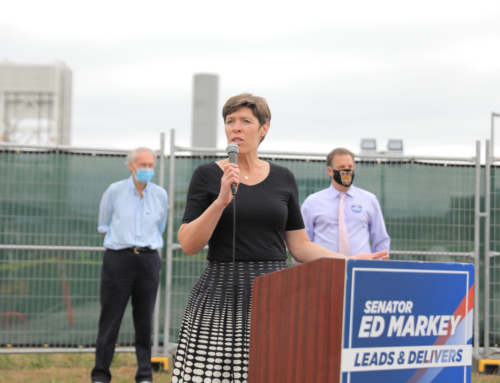(BOSTON) – On January 4, 2021, both the House of Representatives and the Senate passed breakthrough climate legislation that overhauls the state’s climate laws, drives down greenhouse gas emissions, creates clean energy jobs, and protects environmental justice communities.
The bill, An Act Creating a Next-Generation Roadmap for Massachusetts Climate Policy (S.2995), sets a 2050 net-zero greenhouse gas emissions limit, as well as statewide limits every five years; increases the requirements for offshore wind energy procurement, bringing the statewide total to 5,600 megawatts; and requires emission reduction goals for MassSave, the state’s energy efficiency program. The legislation also increases support for clean energy workforce development programs, including those targeting low-income communities, and improves gas pipeline safety. For the first time, the legislation establishes the criteria that define environmental justice in statute.
The bill’s central components contain key provisions from An Act creating a roadmap to a clean and thriving commonwealth, originally filed by Representative Joan Meschino (D-Hull) and known as the “2050 Roadmap.” These 2050 Roadmap provisions update the state’s greenhouse gas emissions reduction goal to net zero by 2050, set strong interim targets, and establish comprehensive and iterative planning mechanisms focused on equity to enable the Commonwealth to achieve this ambitious goal.
“This climate action bill mandates a comprehensive planning process and locks in the key carbon emission reduction milestones needed to get us to net zero in 30 years. I filed the 2050 Roadmap bill to help us achieve that objective,” said Representative Meschino. “Today, I am thrilled to announce that the Massachusetts Legislature passed the next generation roadmap bill with overwhelming support.”
The legislation includes, among other items, the following provisions:
- Sets a statewide net-zero limit on greenhouse gas emissions by 2050 and mandates emissions limits every five years, as well as limits for specific sectors of the economy, including transportation and buildings;
- Codifies environmental justice provisions into Massachusetts law, defining environmental justice populations and providing new tools and protections for affected neighborhoods;
- Requires an additional 2,400 megawatts of offshore wind, building on previous legislation action and increases the total to 5,600 megawatts in the Commonwealth;
- Directs the Department of Public Utilities (DPU), regulator of the state’s electric and natural gas utilities, to balance priorities going forward: system safety, system security, reliability, affordability, equity, and, significantly, reductions in greenhouse gas emissions;
- Sets appliance energy efficiency standards for a variety of common appliance including plumbing, faucets, computers, and commercial appliances;
- Adopts several measures aimed at improved gas pipeline safety, including increased fines for safety violations and regulations related to training and certifying utility contractors;
- Increases the Renewable Portfolio Standard (RPS) by 3 percent each year from 2025 – 2029, resulting in 40 percent renewable energy by 2030;
- Establishes an opt-in municipal net zero energy stretch code, including a definition of “net-zero building;”
- Prioritizes equitable access to the state’s solar programs by low-income communities;
- Establishes $12 million in annual funding for the Massachusetts Clean Energy Center in order to create a pathway to the clean energy industry for environmental justice populations and minority-owned and women-owned businesses;
- Provides solar incentives for businesses by exempting them from the net metering cap to allow them to install solar systems on their premises to help offset their electricity use and save money;
- Requires utilities to include an explicit value for greenhouse gas reductions when they calculate the cost-effectiveness of an offering of MassSave;
- Creates a first-time greenhouse gas emissions standard for municipal lighting plants that requires them to purchase 50 percent non-emitting electricity by 2030 and to achieve “net zero” by 2050; and
- Sets benchmarks for the adoption of clean energy technologies including electric vehicles, charging stations, solar technology, energy storage, heat pumps and anaerobic digesters.
The bill is now with the governor.
